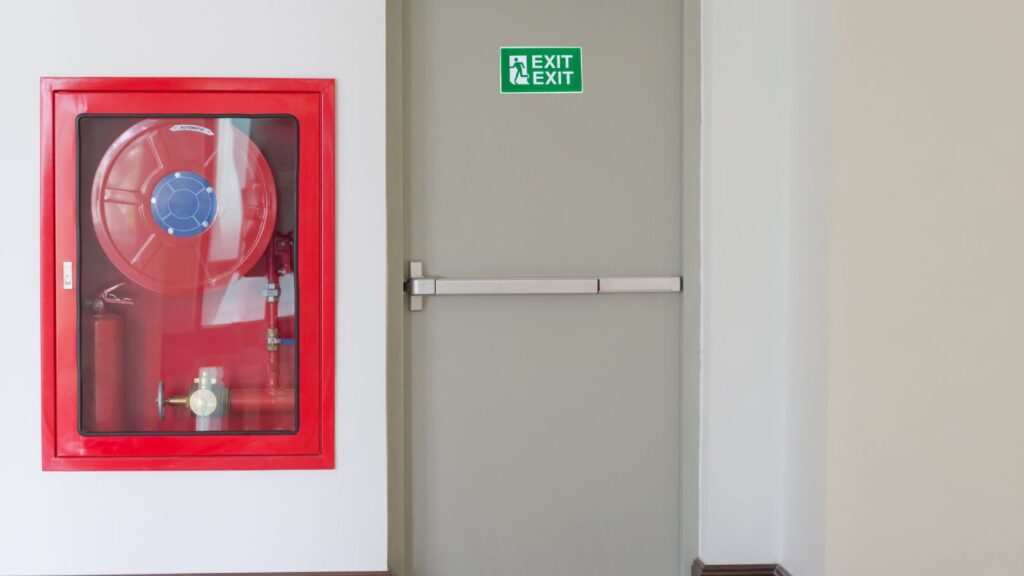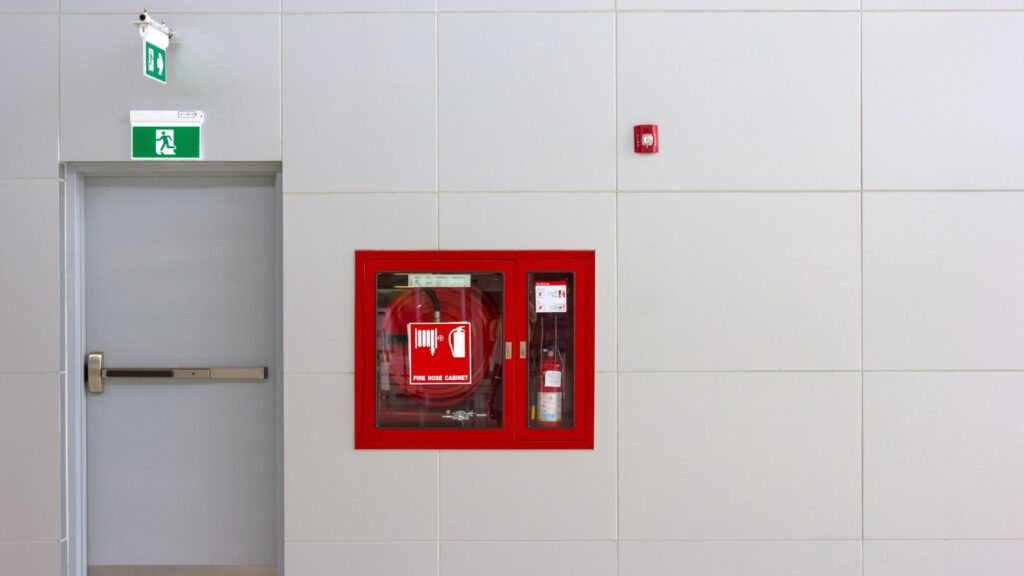
If you own or manage a house in multiple occupation, known as an HMO, fire safety stands out as a top priority. These rules help protect tenants from fire risks. This guide covers what you need to know about fire doors in HMOs.
What Is an HMO?
An HMO is a property rented to three or more people from different households who share spaces like kitchens or bathrooms. This includes shared houses, bedsits, and some flats. Local councils license larger HMOs with five or more tenants.
Fire risks rise in HMOs due to more people and shared areas. Proper fire doors slow fire spread and give time to escape.
Main Laws for HMO Fire Doors
Several laws set the rules for fire doors in HMOs. The Regulatory Reform (Fire Safety) Order 2005 applies to all non-domestic spaces, including HMOs. It requires a fire risk assessment to spot hazards.
The Fire Safety (England) Regulations 2022, in force since 2023, add details for buildings with shared parts. They cover fire door checks and tenant information.
Building Regulations Approved Document B guides new builds and changes. Updates in March 2025 clarified rules for fire doors in residential spots.
In 2025, new guidance states existing doors do not always need replacement if they met old standards and remain in good shape.
Scotland and Northern Ireland have similar but separate rules. Check local laws if your property is there.
Where Do You Need Fire Doors in HMOs?
Fire doors go in key spots to protect escape paths. Place them at:
- Entrances to flats or bedsit rooms from shared halls.
- Bedroom doors, especially if they open to a hallway or stairwell.
- Kitchen doors, as cooking areas pose high risks.
- Living room doors if they lead to escape routes.
- Doors to stairways, lobbies, and corridors in shared areas.

Bathrooms usually skip fire doors unless they hold a boiler. For HMOs over three stories, add doors to every room off a stairwell.
What Specs Do HMO Fire Doors Need?
Most HMO fire door regulations require an FD30 rating. This means they hold back fire for at least 30 minutes. Some spots may need FD60 for 60 minutes.
Include these features:
- Self-closing devices to shut the door automatically.
- Intumescent strips that expand in heat to seal gaps.
- Smoke seals to block smoke.
- Thumb-turn locks inside for quick exits without keys.
- Materials like solid timber or steel that resist fire.
Doors must fit well with gaps no wider than 4mm, except at the bottom.
How to Install and Maintain Fire Doors
Hire a skilled person to install fire doors. Wrong setup can make them fail in a fire.
For maintenance:
- Check doors every six months for damage.
- Look at hinges, seals, and closers.
- Fix issues right away.
- Keep a log of all checks.
You can paint doors, but avoid covering seals or labels.
Fire Door Inspections in HMOs
For buildings taller than 11 meters, inspect communal fire doors every three months. Check flat entrance doors once a year.
During checks:
- See if the door closes fully on its own.
- Look for damage to the door, frame, or seals.
- Test gaps and hardware.
No need for experts on basic checks. Use simple tools like a gap gauge.
Who Handles What: Landlords and Tenants
Landlords act as the Responsible Person. They must:
- Do a fire risk assessment.
- Install and maintain fire doors.
- Give tenants info on fire doors.
- Report faults and fix them fast.
Tell tenants to:
- Keep doors closed when not in use.
- Avoid propping doors open.
- Report any problems right away.
Non-compliance can bring fines over £50,000 or jail time.
Common Errors in HMO Fire Doors
Avoid these issues:
- Using regular doors instead of fire-rated ones.
- Ignoring self-closers or letting them break.
- Allowing large gaps around doors.
- Skipping regular checks.
- Not training tenants on fire door use.
Fix these to keep your property safe and legal.
FAQs on HMO Fire Door Regulations
Do all HMOs need fire doors?
Yes, most do. Check your local council for exact rules based on size and layout.
What if my existing doors are old?
If they were fine when installed and still work well, you may not need to replace them. Get a pro to check.
How much do fire doors cost?
A basic FD30 door set costs around £300 to £500. Prices vary by size and features.
Can tenants change fire doors?
No, without landlord approval. Changes must meet safety rules.
Where can I get more help?
Contact your local fire service or council. Groups like the NRLA offer advice for landlords.
Stay current with these rules to protect lives and avoid penalties. A good fire risk assessment is your first step.










